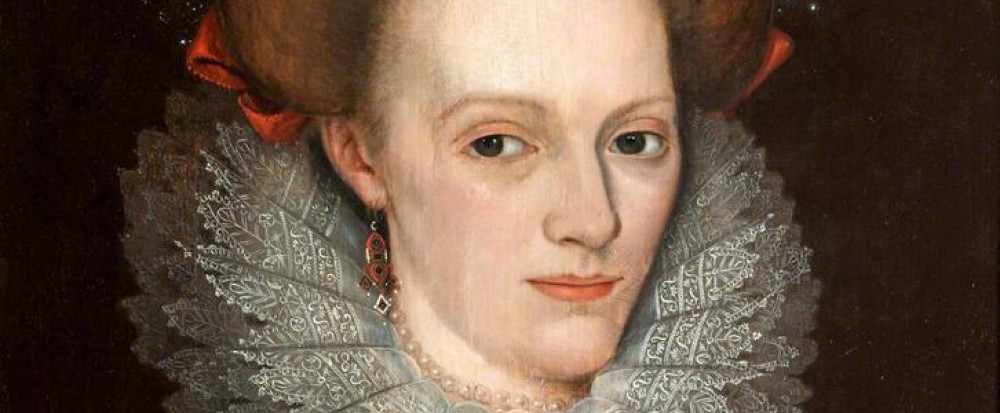If the family stories handed down to you included the fate of two first cousins twice removed, beheaded by a tyrannical King, you could be forgiven for being a bit anti-monarchist. Add into the sticky mix a great grandfather who was possibly the illegitimate son of the same red bearded, big cod piece wearing bully and a great great grandmother whose maiden name was Boleyn – well its enough to turn a good gentlewoman a bit, how shall we say, republican!

Elizabeth Howard – a miniature from the studio of John Hoskins the elder. Courtesy of Ham House, Surrey
Elizabeth Howard was the only surviving child of William Howard and his wife Ann. It was William who could trace his lineage through his mother Katherine Carey, the daughter of Henry Carey who was the son of Mary Boleyn and, rumour has it, Henry VIII.
William’s father, Charles 1st Earl of Nottingham was the grandson of the powerful Thomas Howard, 2nd Duke of Norfolk and first cousin to Anne Boleyn and Catherine Howard, Henry VIII’s second and fifth wives.
Elizabeth Howard was born on January 19, 1603 at Arundel House, the London Howard family home – “a large and old built house, with a spacious yard for stabling towards the Strand, and with a gate to enclose it, where there was a porter’s lodge, and as large a garden towards the Thames near St Clement Danes.” (British History Online.)
Elizabeth divided her time between her father’s London home and Bletchingley Palace, a manor house given to the family by Queen Elizabeth and once belonging to her father’s fourth wife the unattractive, so say, but extremely fortunate Anne of Cleves.
The year 1603 was a momentous one. A year in which the old Tudor Queen Elizabeth died and James VI of Scotland added the English crown to his portfolio.
In 1620 Elizabeth married John Mordaunt, who had his own monarchical problems. John was the son of Henry Mordaunt, imprisoned in the Tower of London on suspicion of being involved in the Gunpowder Plot of 1605. Whether the Crown ever had a case against Henry remains up for debate. He was eventually released after a year in the fortress prison, during which time his son was removed from the family home and made a ward of the Archbishop of Canterbury, George Abbott.
Fortunately the handsome young Mordaunt heir had caught the eye of King James who had a weakness for a comely pair of male legs. In 1616 he made John a Knight of the Bath as part of the celebrations of the investiture of Charles as Prince of Wales and on March 9, 1628 Charles himself created John 1st Earl of Peterborough. So everything was hunky dory on the royal front then?
However as an impending civil war loomed on the horizon, Elizabeth made no bones about whose side she was on, and it wasn’t the King’s.
Elizabeth and John had three surviving children, sons Henry and John and a daughter Elizabeth.
John died in 1642. Elizabeth outlived him by almost 30 years. She died at their Drayton home in Northamptonshire in 1671. Her body was interred in the churchyard at Chelsea Old Church alongside her father and grandmother Katherine Carey.
So I know you are waiting for the great St John reveal. Well the first connection is straightforward. Elizabeth’s mother was Ann St John of Bletsoe, the daughter of John 2nd Baron St John of Bletsoe and Catherine Dormer from the senior branch of the family descended from Margaret Beauchamp’s elder son John.
But there is another …
Remember Elizabeth’s father William Howard traced his ancestry back to Henry Carey, the son of Mary Boleyn, and possibly Henry VIII. Well Mary had a daughter Catherine who may also have been the daughter of Henry VIII. Catherine Carey married Francis Knollys by whom she had a daughter named Elizabeth. Elizabeth Knollys married Sir Thomas Leighton and their daughter Anne married Sir John St John 1st Baronet, whose magnificent alabaster memorial stands in St Mary’s Church, Lydiard Tregoze.
Fascinating, isn’t it!






